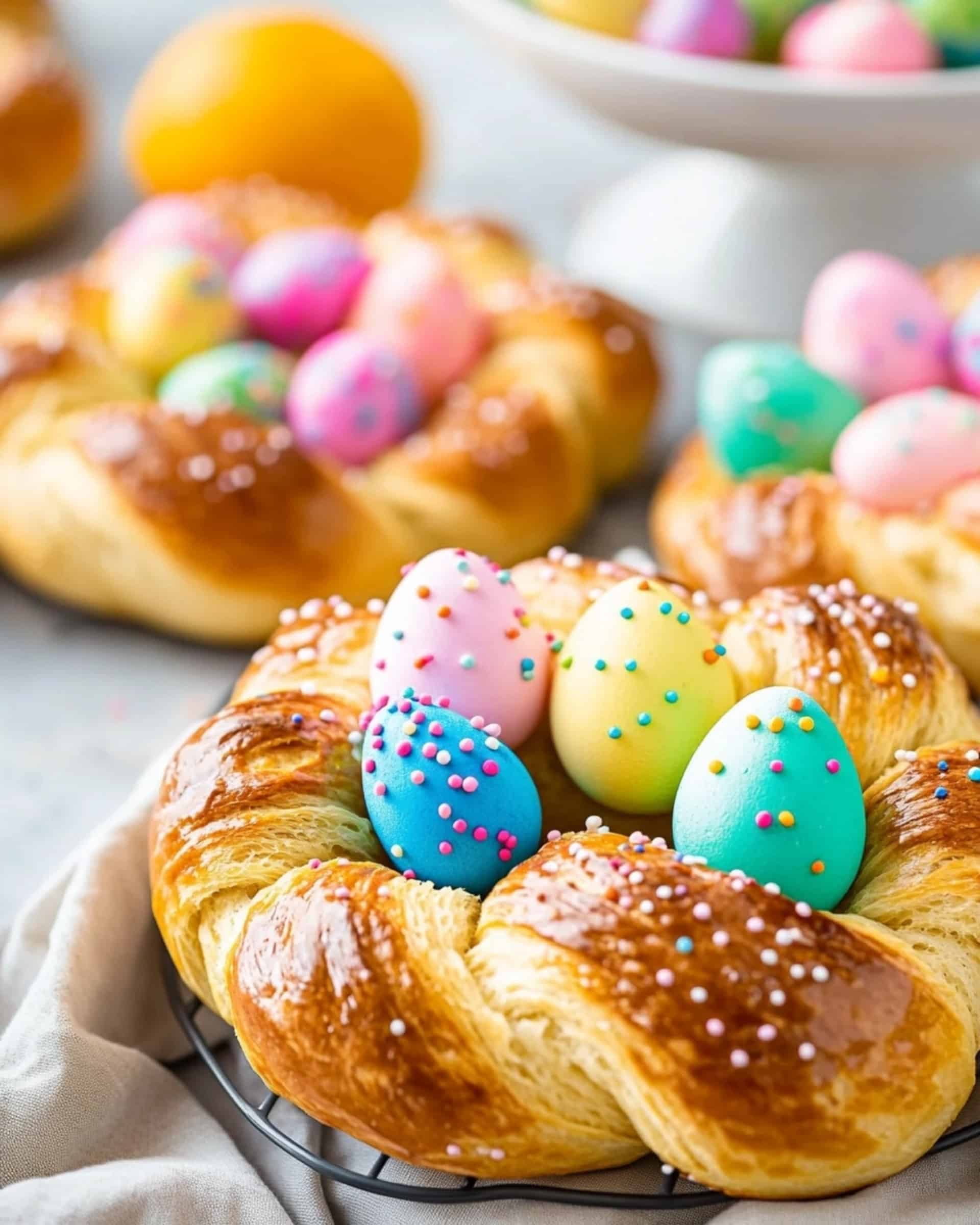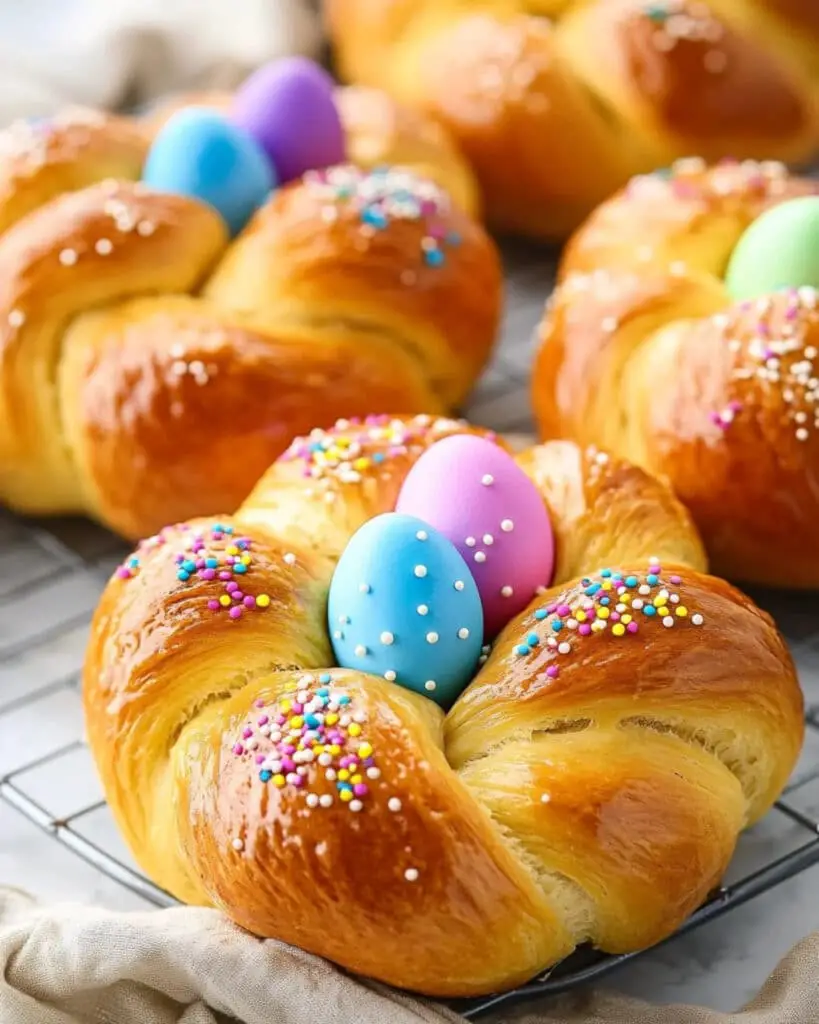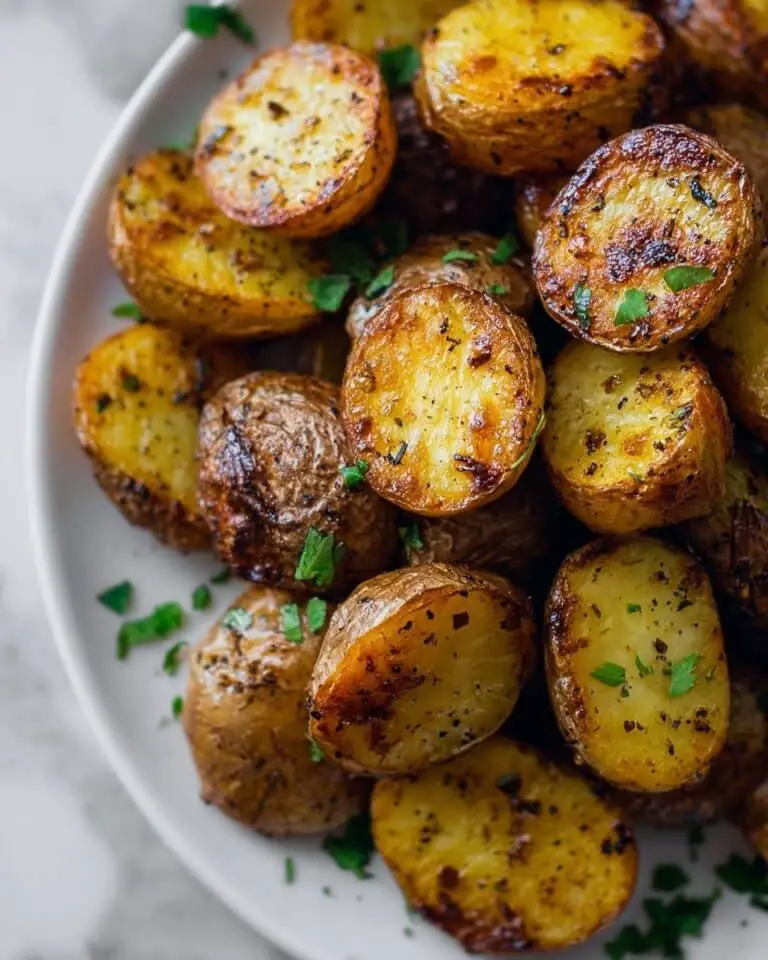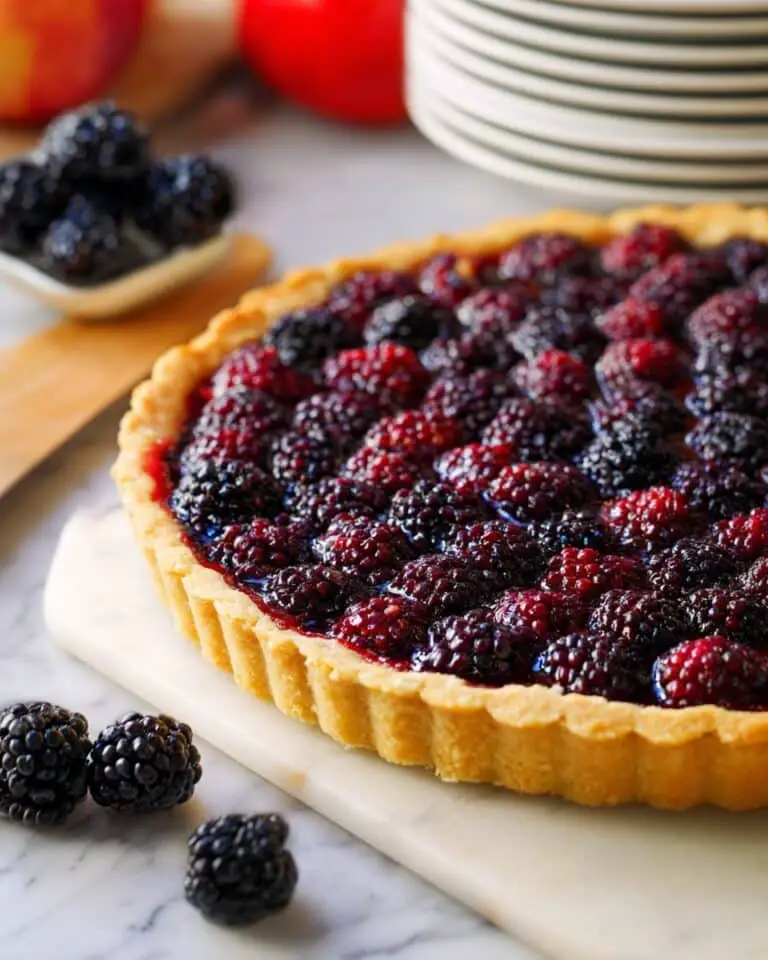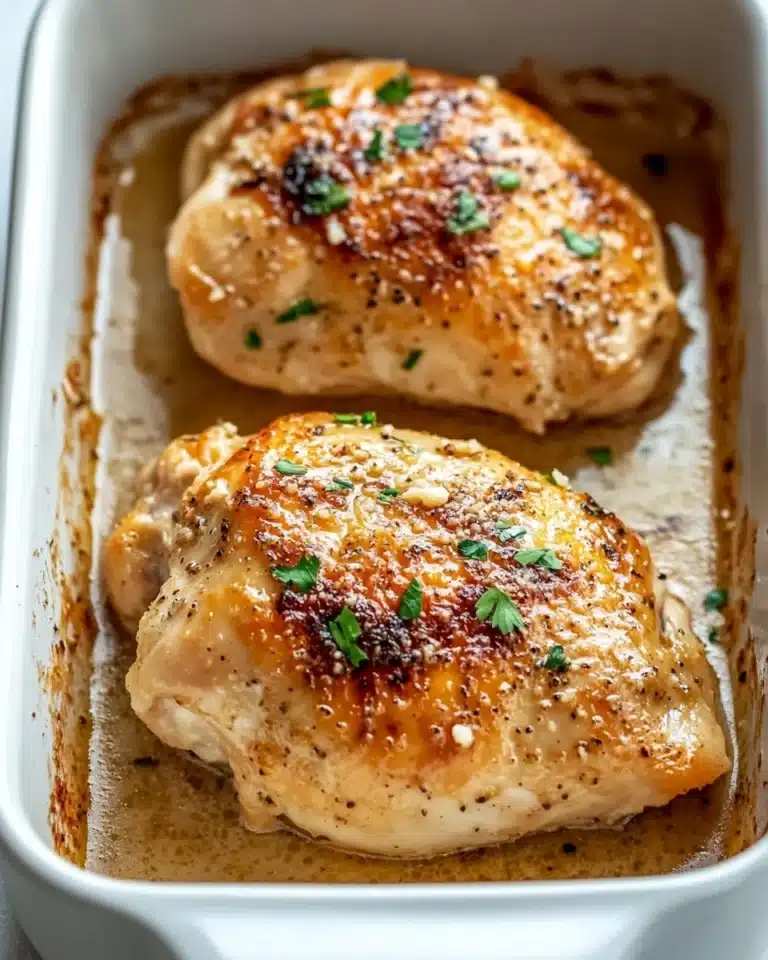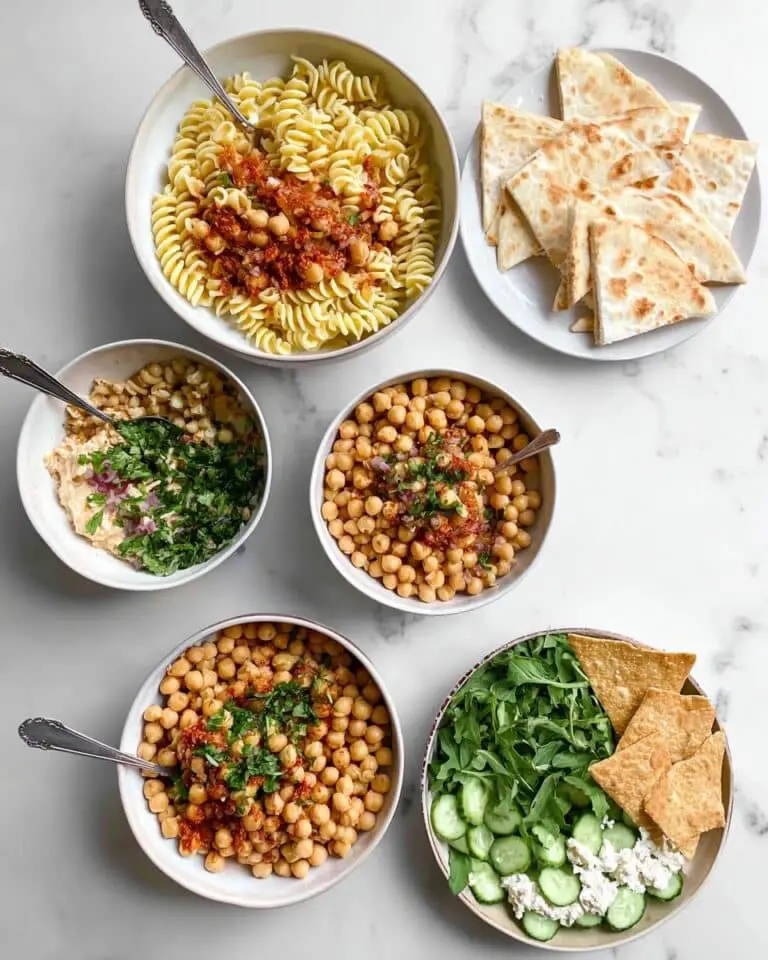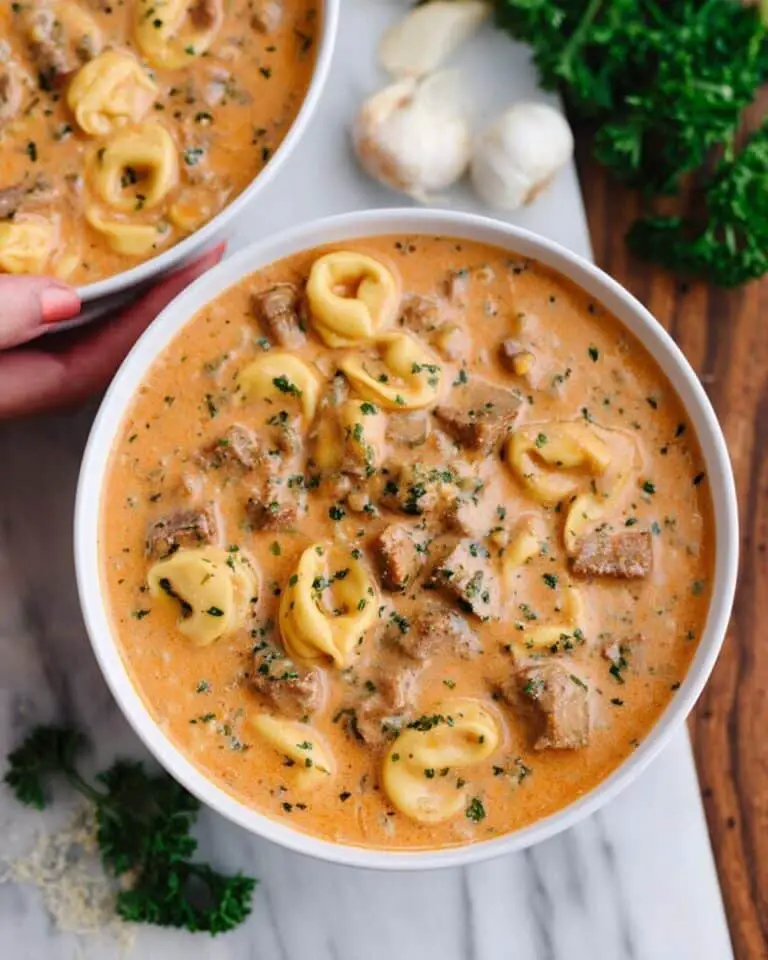This delightful Easter Bread is a true celebration of spring! With its soft, pillowy texture, subtle citrus notes, and adorable presentation, it’s sure to become the centerpiece of your holiday table. What makes this bread special isn’t just its beautiful braided design and colorful eggs, but the wonderful aroma that fills your home as it bakes. Perfect for Easter morning or as a sweet treat to share with loved ones during spring gatherings!
Why You’ll Love This Recipe
- Impressive yet Simple: This bread looks like it came from a professional bakery, but the braiding technique is surprisingly manageable, even for beginners.
- Customizable: You can make it as colorful or as subtle as you like with different colored eggs and sprinkle combinations to match your holiday decor.
- Perfect Texture: The dough creates a bread that’s soft and tender inside with a slightly sweet flavor that everyone will adore.
- Family Tradition Worthy: This is one of those recipes that becomes a cherished family tradition—kids especially love helping with the colorful eggs and sprinkles!
Ingredients You’ll Need
- Whole Milk: Provides richness and creates that tender, soft texture that makes this bread so special.
- Butter: Adds flavor and helps create that perfect consistency in the dough.
- All-Purpose Flour: Forms the structure of the bread; dividing it during addition helps ensure proper dough development.
- Granulated Sugar: Just enough sweetness to make this bread a treat without being overpowering.
- Rapid Rise Instant Yeast: The magic ingredient that helps the dough rise quickly and reliably.
- Citrus Zest: Both lemon and orange zest add bright, aromatic notes that scream spring and make this bread truly special.
- Eggs: Provide structure, richness, and that lovely golden color to the dough.
- Vanilla Extract: That warm, complementary flavor that ties everything together.
- Uncooked Colored Easter Eggs: These create the stunning visual appeal and cook during baking to be about soft-boiled when done.
- Colorful Sprinkles: The festive finishing touch that makes this bread irresistible to children and adults alike.
Note: You’ll find the complete list of ingredients, along with their exact measurements, in the printable recipe card at the bottom of this post.
Variations
Want to make this Easter bread your own? Try these creative twists:
- Anise Flavor: Add 1 teaspoon of anise extract for a traditional Italian Easter bread flavor profile.
- Almond Joy: Substitute almond extract for vanilla and sprinkle with sliced almonds instead of colorful sprinkles.
- Cardamom Spiced: Add 1 teaspoon of ground cardamom to the dry ingredients for a Scandinavian-inspired version.
- Individual Rolls: Instead of making four large rings, divide the dough into smaller portions to make individual-sized rolls, each with its own colorful egg.
How to Make Easter Bread
Step 1: Prepare the Dough Mixture
In a large mixing bowl, combine 2 cups of flour with sugar, yeast, and both citrus zests. Warm the milk and butter in the microwave until just warm (not hot), then add this liquid along with eggs and vanilla to your dry mixture. Mix with a dough hook until you have a batter-like consistency.
Step 2: Develop the Dough
Gradually add the remaining 2 cups of flour while continuing to mix with the dough hook. Keep mixing until the dough is smooth and no longer sticks to the bowl. Continue kneading with the dough hook for about 8 minutes to develop the gluten structure.
Step 3: First Rest
Turn the dough onto a lightly floured surface and knead briefly by hand to form a ball. Place in a clean bowl, cover with plastic wrap, and let rest for 15 minutes. This short rest allows the gluten to relax, making the dough easier to shape.
Step 4: Shape the Braids
Punch down the dough to release air bubbles, then divide it into 8 equal pieces. Roll each piece into an 11-inch rope. Take two ropes, pinch them together at one end, and braid them. Form each braid into a ring, pinching the ends together securely. Place on a parchment-lined baking sheet.
Step 5: Second Rise
Cover the braided rings with plastic wrap and let them rise in a warm place for 30-60 minutes, or until doubled in size. This patient waiting period is when the magic happens—your dough will become light and airy.
Step 6: Prepare and Bake
Preheat your oven to 375°F. Brush the risen dough rings with egg wash, nestle an uncooked colored Easter egg in the center of each ring, and sprinkle with colorful sprinkles. Bake for 20 minutes, rotating the pan halfway through, until golden brown and fragrant.
Pro Tips for Making the Recipe
- Temperature Matters: The milk mixture should be warm, not hot, to activate the yeast without killing it. Think baby-bottle warm—comfortable on your wrist.
- Don’t Rush the Rise: Allow proper rising time for the most tender, fluffy texture. The dough should visibly double in size.
- Egg Placement: Press the uncooked egg gently but firmly into the dough ring—if it’s too shallow, it might pop out during baking.
- Even Braiding: Try to roll your dough ropes to equal thickness for the most attractive finished bread.
- Cooling Position: Transfer the baked bread to a cooling rack promptly to prevent the bottom from getting soggy.
How to Serve
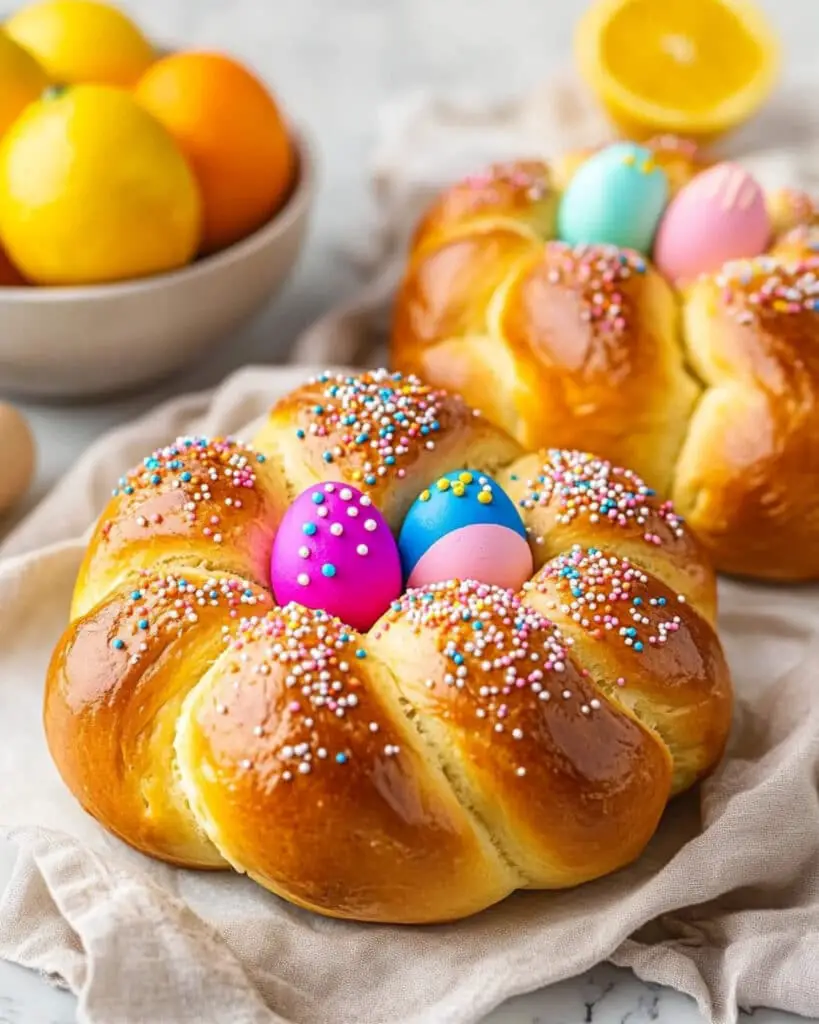
Easter bread is versatile and can be enjoyed in several delicious ways:
Morning Treat
Serve slightly warm with butter and a drizzle of honey for an Easter morning treat alongside coffee or tea.
Holiday Table
Include on your Easter buffet as both decoration and a delicious bread option. The colorful rings make a stunning centerpiece.
Accompaniments
Pair with ham or lamb for Easter dinner—the subtle sweetness of the bread complements savory main dishes beautifully.
Make Ahead and Storage
Storing Leftovers
Once completely cooled, store in an airtight container at room temperature for up to 3 days. For longer storage, refrigerate for up to 5 days. If storing at room temperature, remove the eggs and keep them refrigerated separately.
Freezing
The bread freezes beautifully for up to three months, but remove the eggs first. Wrap tightly in plastic wrap, then place in a freezer bag with the air pressed out.
Reheating
To enjoy warm, microwave individual portions for 15-20 seconds or wrap in foil and heat in a 300°F oven for about 10 minutes.
FAQs
-
Can I use hardboiled eggs instead of raw eggs?
While traditional recipes call for raw eggs that cook during baking, you can use hardboiled eggs for decoration only. Keep in mind they may discolor slightly during baking and will be overcooked. If using hardboiled, add them just for the last 5 minutes of baking time.
-
My dough isn’t rising well. What went wrong?
The most common culprits are inactive yeast or too cool an environment. Make sure your yeast is fresh and create a warm rising environment by placing the covered dough near a preheating oven or in an oven with just the light on.
-
Can I make this dough the night before?
Yes! After shaping the braids, cover them tightly and place in the refrigerator overnight. In the morning, let them come to room temperature and complete their rise (about 1 hour) before baking.
-
Are there any dairy-free alternatives I can use?
Absolutely! Substitute the whole milk with almond milk or oat milk, and use a plant-based butter alternative. The texture might be slightly different, but the bread will still be delicious.
Final Thoughts
This Easter Bread isn’t just a recipe—it’s a tradition waiting to happen in your home. There’s something magical about the way the colorful eggs nestle into the golden braided rings, creating a feast for both the eyes and taste buds. Whether you’re continuing a family tradition or starting a new one, this bread brings warmth and joy to your Easter celebration. The process of making it—from mixing the fragrant dough to braiding the soft strands—is almost as rewarding as watching loved ones enjoy each delicious bite. Give it a try this Easter, and watch as it becomes one of your most requested holiday specialties!
Print
Easter Bread Recipe
- Prep Time: 1 hour
- Cook Time: 45 minutes
- Total Time: 2 hours 5 minutes
- Yield: 4 pieces
- Category: Bread
- Method: Baking
- Cuisine: Italian
- Diet: Vegetarian
Description
Easter Bread is a traditional, delightfully soft and fluffy bread made with a hint of citrus from lemon and orange zest. This showstopping recipe is braided into beautiful rings, decorated with dyed uncooked Easter eggs and colorful sprinkles, offering both taste and festive charm. The bread makes a perfect addition to your holiday celebration.
Ingredients
- 1 cup whole milk
- 1/4 cup butter
- 4 cups all-purpose flour (divided: 2 cups and 2 cups)
- 1/3 cup granulated sugar
- 2 1/4 teaspoons rapid rise instant yeast (1 package)
- Zest of 1 lemon
- Zest of 1 orange
- 2 eggs
- 1 teaspoon vanilla extract
- 1 egg
- 1 teaspoon milk
- Dyed Easter eggs (uncooked – NOT hardboiled)
- Colorful sprinkles
Instructions
- Mix the Dry Ingredients:
In a large mixing bowl, combine two cups of flour, sugar, yeast, salt (if using), and the lemon and orange zests. Mix thoroughly with a spoon and set aside. - Warm the Milk and Butter:
In a microwave-safe bowl, combine the butter and milk. Heat the mixture in the microwave, stirring intermittently. Start with 1 minute and then 10-second intervals until the mixture is warm but not boiling. - Combine Wet and Dry Ingredients:
Add the eggs, vanilla extract, and warmed milk mixture into the bowl with the dry ingredients. Using the dough hook of a stand mixer, mix well for about 1 minute. The mixture will resemble cake batter consistency. - Incorporate Remaining Flour:
Gradually add the remaining 2 cups of flour into the mixer. Continue mixing with the dough hook until the dough becomes smooth and no longer sticks to the bowl. If necessary, add a tablespoon of flour at a time to prevent sticking. Knead the dough in the mixer for about 8 minutes. - Knead and Rest the Dough:
Place the dough on a lightly floured surface and knead gently by hand a few times to form it into a smooth ball. Use minimal flour to avoid sticking. Transfer the dough to a clean bowl, cover with plastic wrap, and let it rest for 15 minutes. - Shape the Dough:
Remove the dough and punch it down to release any air. Divide the dough into 8 equal pieces. Roll each piece into ropes approximately 11 inches long. Pinch two ropes together at one end and braid them. Shape the braid into a ring and pinch the ends together to seal. - Allow to Rise:
Place the braided rings on a parchment-lined baking sheet. Cover them with plastic wrap and let them rise in a warm place for 30 minutes to 1 hour, or until doubled in size. - Prepare for Baking:
While the dough is rising, preheat your oven to 375℉. Make an egg wash by whisking the egg and milk together in a small bowl. Once the dough is risen, brush the egg wash generously over the braids. - Decorate and Bake:
Nestle a dyed, uncooked Easter egg into the center of each ring and sprinkle with colorful sprinkles. Bake for 20 minutes, rotating the baking sheet halfway through for even baking. The bread is done when golden brown and cooked through. - Cool and Serve:
Transfer the baked bread to a cooling rack. Serve warm for the best flavor and texture!
Notes
- Storage: Once completely cooled, store the bread in an airtight container at room temperature for up to 3 days. Remove the eggs and refrigerate them separately. It can be stored in the fridge for up to 5 days or frozen for up to 3 months (remove eggs before freezing).
- Decorated Eggs: Ensure the eggs are uncooked and dyed before adding them to the bread. They will cook during the baking process to a soft-boiled consistency.
- Tips for Braiding: If the dough is too sticky to work with, lightly dust your hands and workspace with flour. Avoid over-flouring as it can alter the bread’s texture.
Nutrition
- Serving Size: 1 piece
- Calories: 245
- Sugar: 5g
- Sodium: 190mg
- Fat: 7g
- Saturated Fat: 4g
- Unsaturated Fat: 3g
- Trans Fat: 0g
- Carbohydrates: 37g
- Fiber: 1g
- Protein: 7g
- Cholesterol: 55mg

